Last-Minute NYC Holiday Gift Guide 🎁
We’ve created a holiday gift guide with presents for the intrepid New Yorker that should arrive just in time—


After it was decommissioned in the 1950s and partially demolished, the Brooklyn Rapid Transit Power Station standing at the edge of the Gowanus Canal was abandoned for decades. Opened in 1904, the 8-story brick building designed by Thomas Edward Murray helped to supply power to Brooklyn’s growing transit system. In the 2000s, the derelict structure became known as the Batcave and was home to a community of squatters. Now, after more than five years of restoration work, the Batcave has transformed into Powerhouse Arts, an arts center with manufacturing, exhibition, and educational spaces.
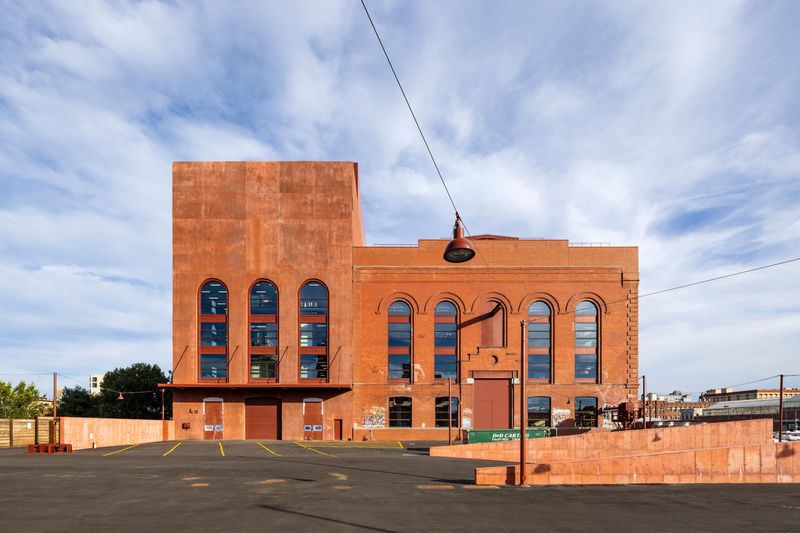
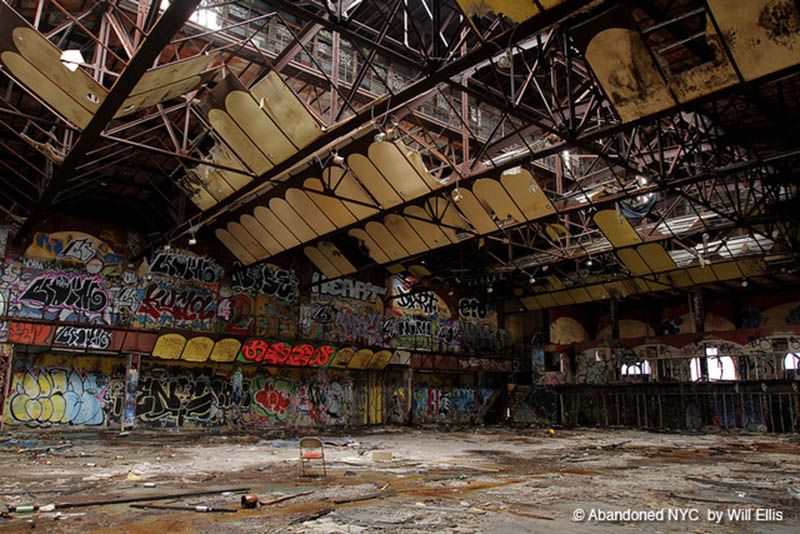
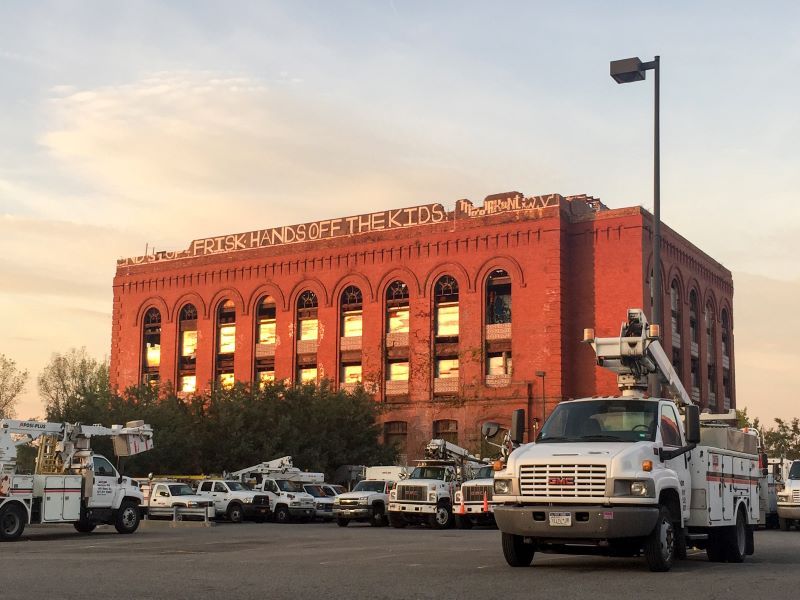
Sitting at the intersection of Red Hook, Carroll Gardens and Park Slope, the historic building has seen much change and development in the surrounding neighborhoods in recent years. Plans for the conversion of the building were first announced in 2017 and the project broke ground in 2018.
When restoration began, only half of the original structure, the Turbine Hall, was standing. The Boiler House had been demolished. As part of the building’s renewal led by Herzog & de Meuron in collaboration with PBDW Architects, the Boiler House was reimagined and rebuilt. The adjoining historic Turbine Hall building was stabilized and preserved. All of the work done to the structures pays homage to the building’s original purpose and design, as well as the gritty and creative spirit it acquired while abandoned.
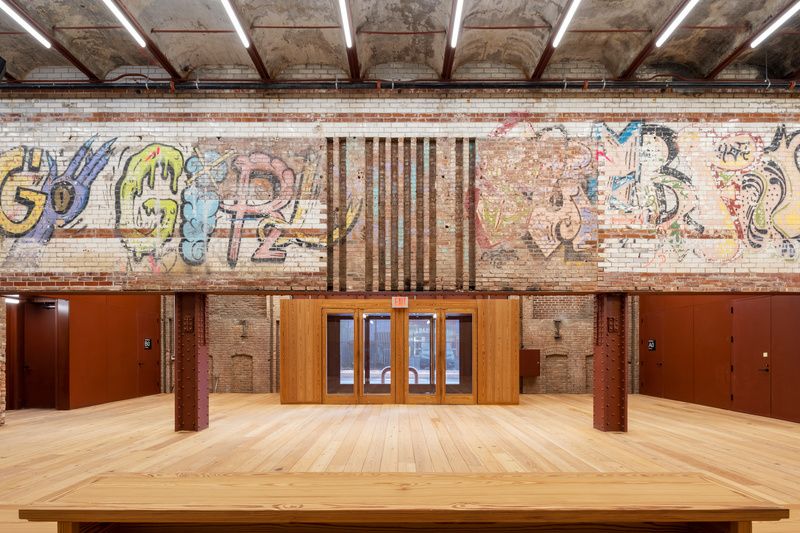
The reconstructed Boiler House contains fabrication spaces to support the production of print, ceramics, and public art. There are more than 170,000 square feet of fabrication shops stacked vertically within the building. Public art workshops, which require the highest ceilings and best access to loading areas, are located on the ground floor. Above, there are workshops dedicated to print and ceramic production, disciplines that require strict exhaust specifications and access to the building’s rooftop extraction units.
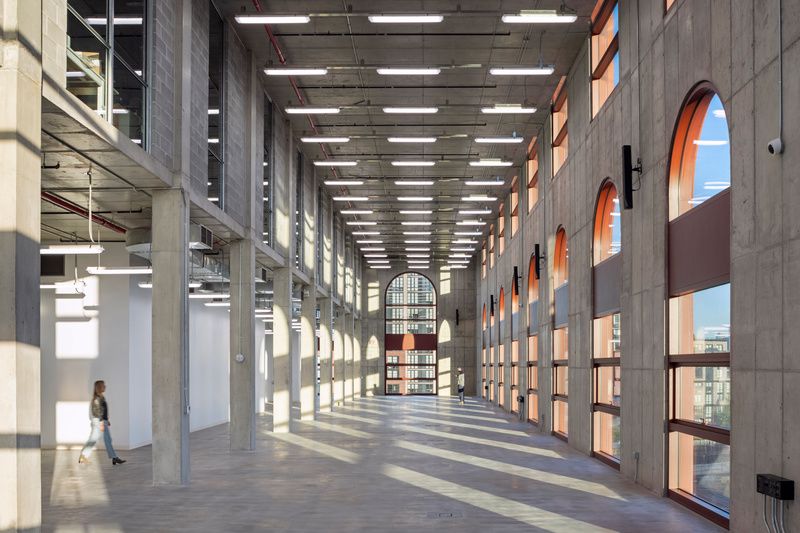
Public programminging inside the Boiler House will take place at the Loft, a double-height room that can function as both an exhibition space, staging area, and fabrication workshop. When functioning as a BRT power plant, this space produced and supplied the steam that was funneled into the turbines in the adjacent Turbine Hall.
In the adjoining Turbine Hall, the iconic uppermost floor has been transformed into the “Grand Hall,” a forum for multi-use and public programming. This flexible community gathering space with host exhibitions, large installations and art staging, performances, art fairs, events, and more. This space is where the turbines were once located, producing power for Brooklyn’s above-ground train system.
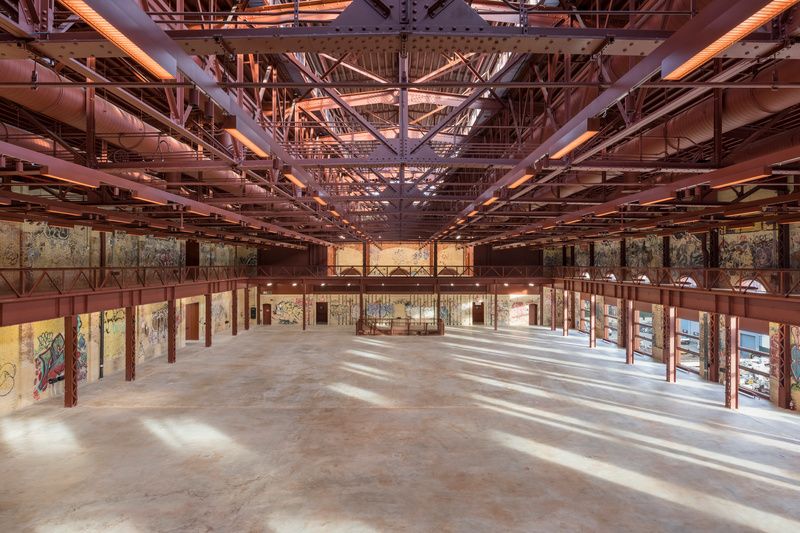
Outside, work by the project’s landscape architect, Ken Smith Workshop, has helped to make the building more resilient in the face of climate change. The Powerhouse site was raised 13 feet to protect the building from flooding mand a new sheet pile sea wall was installed alongside the waterfront walkway.
Underground Brooklyn Subway Tour
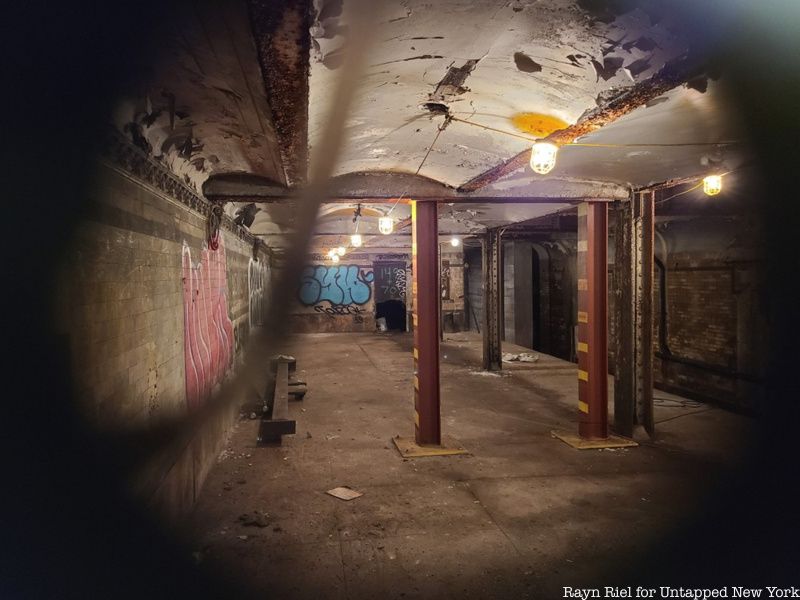
The debut exhibition now on display is Hive Mind. This group exhibition showcases the work of 26 participating artists from across the Powerhouse Arts organization, a not-for-profit organization that “hosts an extended network of art and fabrication professionals and educators who work together to co-create and share artistic practices vital
to the wellbeing of artists and the communities to which they belong.” Some of the participating artists include Andrea DiStefano, Biata Roytburd, Chris Kinsler, and others.
Among the preserved graffiti that has been worked into the new design, you’ll also find a newly commission mural by Brooklyn-born, New Orleans-based artist Ellery Neon tilted Flying Home. Neon actually lived in the Batcave with friends in 2002 and used the side of the building as their own “personal billboard” for graffiti. The new mural depicts a pigeon in flight and pays homage to another mural Neon created. Neary’s “You Go Girl” mural, which was created when the building was abandoned, has been preserved and is on display in the lobby.
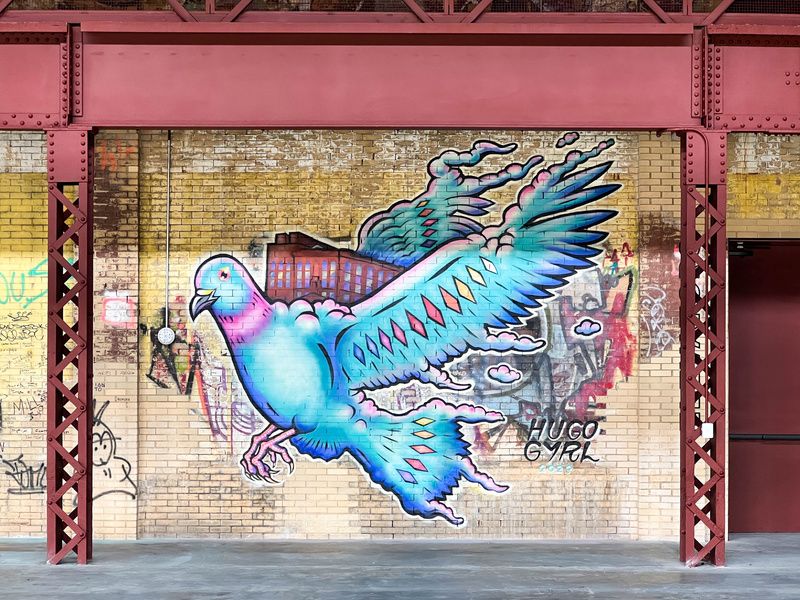
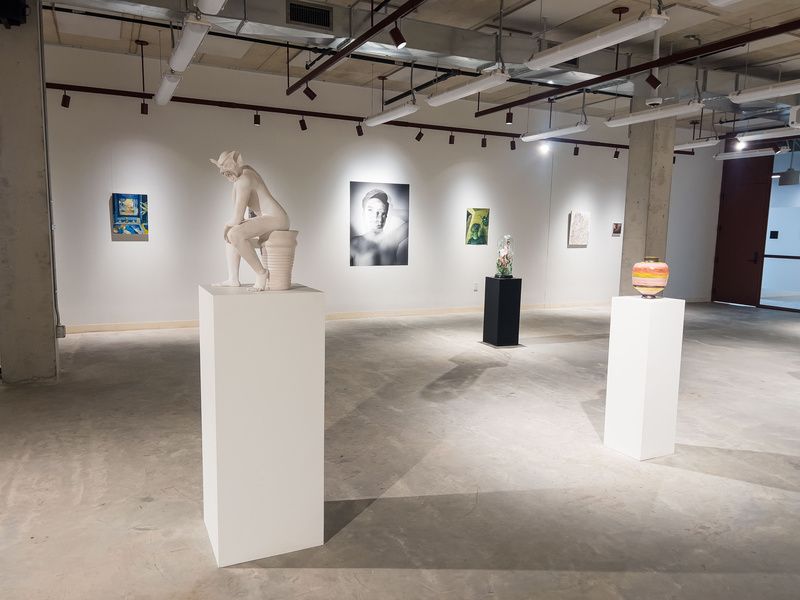
Also currently on view at Powerhouse Arts is a duration performance and installation by Miles Greenberg titled TRUTH. This piece is the first part of a trilogy that takes its name from a scene in the novel Orlando, by Virginia Woolf: TRUTH, CANDOUR and HONESTY. In this work, Greenberg “creates a portal into an alternate reality through which viewers are encouraged to leave the real world behind as they experience a utopic, watery landscape, populated by mysterious, silent avatars.” Check out more photos of the new Powerhouse Arts center in the gallery below!
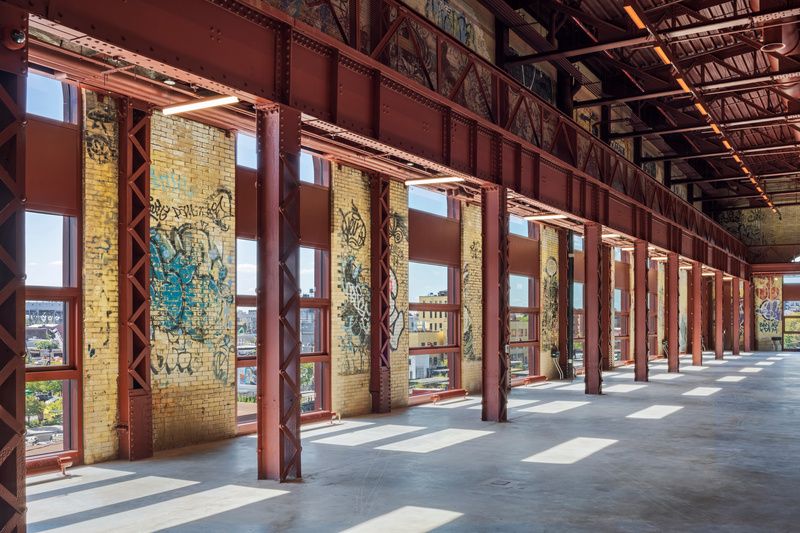
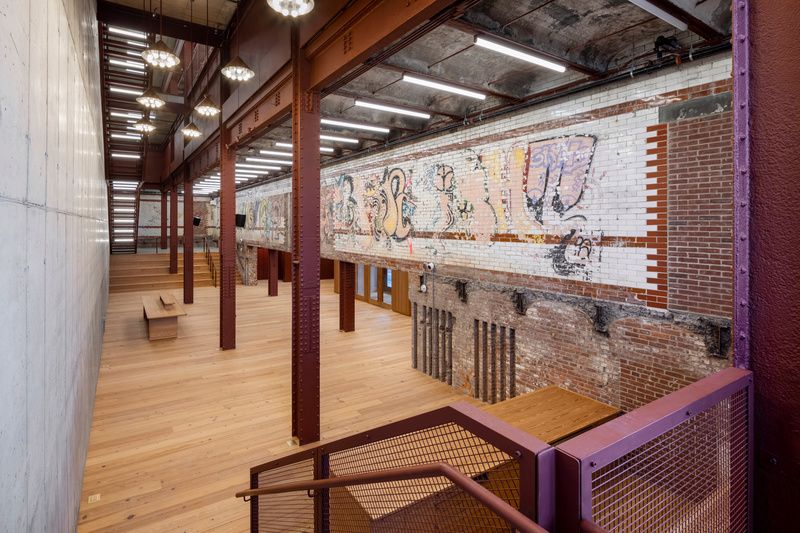
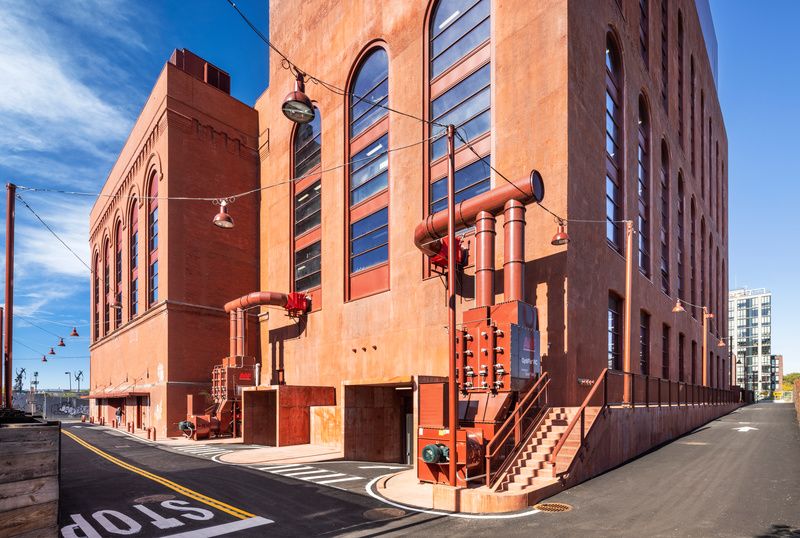
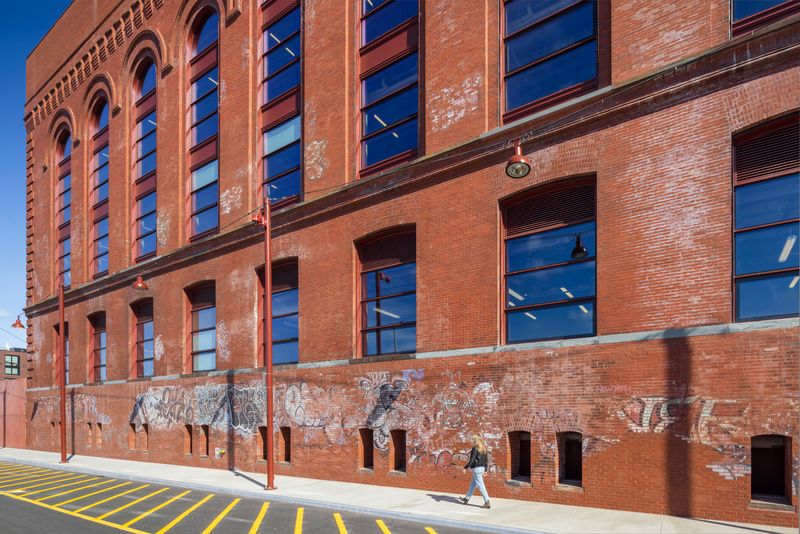
Next, check out 12 Abandoned Places in Brooklyn
Subscribe to our newsletter